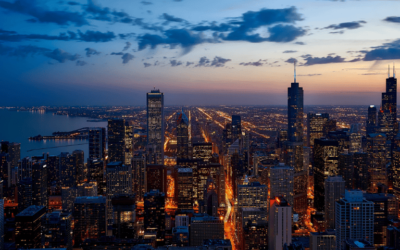Advantages of Using LED Lighting for Healthcare Facilities
Some of the lesser-known advantages of LED lighting include the following.
- LEDs are versatile. The lights can be used indoors and outside the facility in areas like parking lots and garages, storage areas, hallways, walkways, exam rooms, etc.
- The energy-efficient lights reduce maintenance costs, especially in areas with high ceilings and other hard-to-reach places.
- LEDs reduce shadows and uneven lighting by providing consistent illumination with multiple points of light.
- The lights are compatible with controls to further increase energy savings.
- The lighting system is operational at all times, without worrying about burned-out bulbs.
- You can adjust the lighting color to meet staff and patient preferences.
- LEDs do not generate as much heat as other types of lighting. Since the lighting does not affect room temperature, HVAC systems do not need to work as hard.
With the benefits you get from LEDs, it makes sense to consider a retrofit. However, upgrading a hospital’s lighting system can seem overwhelming. How do you come up with the budget and coordinate the project across the healthcare facility?
When considering an LED retrofit for your hospital a good starting place is to calculate your over all savings. Our eBook, The Essential Guide to Calculating Energy Savings and ROI on any Lighting Project, is just the place to start. We provide the calculations for everything from your lighting only energy savings, to HVAC, maintenance, labor, and so much more. Click here for your free download.
Tips on Upgrading Your Hospital Lighting Systems
Lighting upgrades can be simplified using LEDs compatible with your current fixtures. These LEDs are compatible with fluorescent, incandescent, halogen, high-pressure sodium, and metal halide lamps. You can choose to replace a few or all of the light sources depending on your budget.
Reusing the existing light fixtures maximizes your budget and helps keep overall costs down. It also limits any disruptions to the facility’s operations.
LED Retrofits for Healthcare Facilities – FAQ
Is your healthcare facility a good candidate for an LED retrofit? Your answers to the following questions can help you make the right decision.
Are the existing fixtures in your hospital in good condition?
When the housing, lenses/shades, reflectors, trim, and wiring show signs of damage, you may need to replace both fixture and bulb. However, if the existing fixtures are in good condition, you can save time and money with a compatible LED.
Do you like your existing lighting layout and fixtures the way they are?
If you want to change the existing lighting fixtures or layout, a full LED upgrade will be needed. On the other hand, if you are satisfied with the current placement and look of the fixtures, your healthcare facility can benefit from an LED retrofit using compatible LEDs.
Will your existing fixtures need to be replaced soon?
Planned renovations that change the look of the facility may mean an LED upgrade is a good investment. You can make all of your renovations at one time and not extend your facilities down-time.
What to Look for in LED Products
Before selecting any LED products, it’s a good idea to check for the following criteria.
- The LEDs are ETL or UL listed to confirm it will perform without safety hazards
- Lighting products are either DLC Standard or Premium. Lighting products rated DLC Premium are more efficient than standard ones.
- The LED manufacturer is ISO certified. The certification lets you know the products are constructed and tested to perform consistently.
Replacing a hospital lighting system is a large project. To ensure you are using the best lighting products for your healthcare facility, contact us. We can help you plan your LED retrofit from start to finish, and work seamlessly with your in-house staff.
To speak with an Action Services Group LED lighting specialist, call us today at 610-558-9773, email [email protected] or schedule a call.







































0 Comments